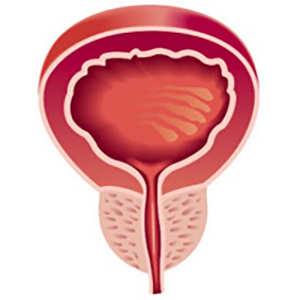A single-operator experience using EchoLaser SoracteLiteTM for focal laser ablation of prostate cancer: one more arrow in the quiver for the conservative management of the disease

Accepted: October 23, 2022
All claims expressed in this article are solely those of the authors and do not necessarily represent those of their affiliated organizations, or those of the publisher, the editors and the reviewers. Any product that may be evaluated in this article or claim that may be made by its manufacturer is not guaranteed or endorsed by the publisher.
Authors
Background: The aim of this study was to evaluate the outcomes of patients suffering prostate cancer (PCa) treated conservatively using 1064 nm laser energy for focal laser ablation (FLA). The patients included in the study were unsuitable for surgery or unwilling to receive external beam radiotherapy because they were afraid of the possible side effects of whole-gland therapies.
Methods: This study included patients with a diagnosis of nonmetastatic PCa who underwent FLA using SoracteLiteTM system. Tissue ablation was performed at a fixed power of 5 W by the diode multichannel laser system EchoLaser X4 that uses laser light transmitted through optical fibres causing the target tissue to undergo irreversible thermal damage. Functional outcomes were evaluated with the International Prostatic Symptoms Score (IPSS) and 5-item version of the International Index of Erectile Function (IIEF-5) before the treatment and one year later.
Results: Ten patients suffering non-metastatic PCa were included. Four decided upon a conservative treatment because of reduced performance status and for six patients the procedure was chosen electively. All patients underwent multiparametric magnetic resonance imaging at 3 and 12 months and eight out of ten patients underwent prostate biopsy at 6 months. Persistent disease was detected in 3 patients who underwent a second ablation. In these patients at the biopsy following the second ablation none harbored residual disease. At follow-up, no patient suffered urinary incontinence requiring the use of pads. No significant worsening in sexual potency measured with IIEF-5 (p = 0.356) or prostatic symptoms measured at IPSS (p = 0.462) were recorded comparing pre-treatment condition vs one-year follow-up. Compared with baseline, prostate-specific antigen was significantly reduced at one-year follow-up (3.7 ± 1.1 vs 7.9 ± 4.1 ng/mL; p = 0.008).
Conclusions: Although whole gland therapies remain the gold standard treatment for PCa, our results indicate that the SoracteLiteTM system for focal laser ablation, as a very preliminary step, appears to offer a short-term oncologic control of PCa with negligible side effects.
How to Cite

This work is licensed under a Creative Commons Attribution-NonCommercial 4.0 International License.
PAGEPress has chosen to apply the Creative Commons Attribution NonCommercial 4.0 International License (CC BY-NC 4.0) to all manuscripts to be published.

 https://doi.org/10.4081/aiua.2022.4.406
https://doi.org/10.4081/aiua.2022.4.406



